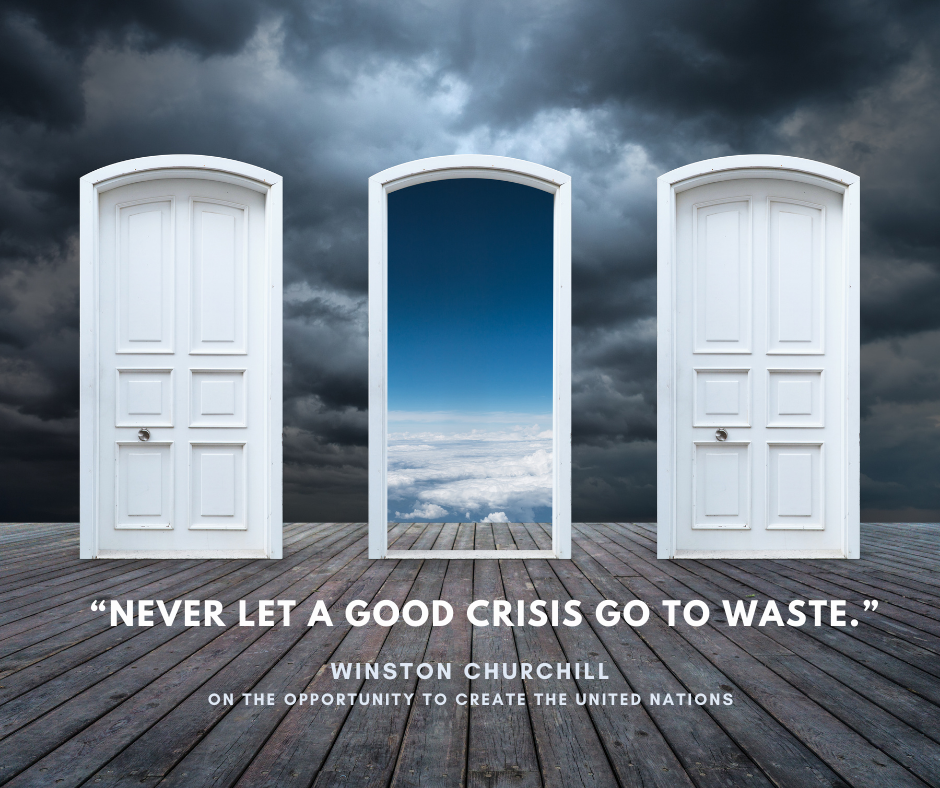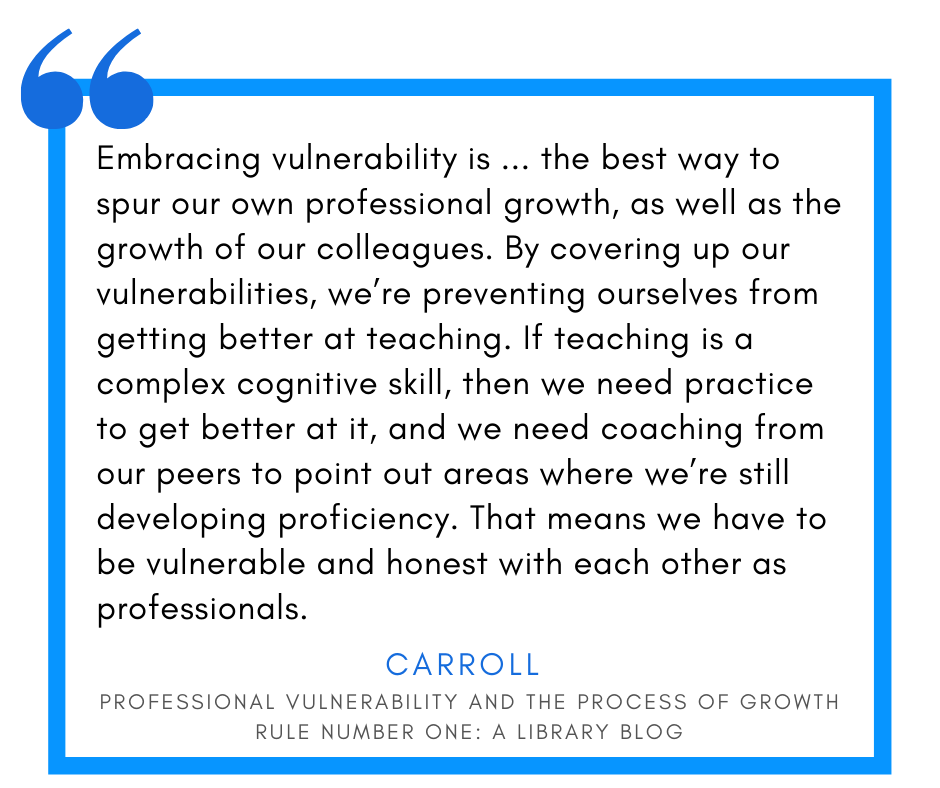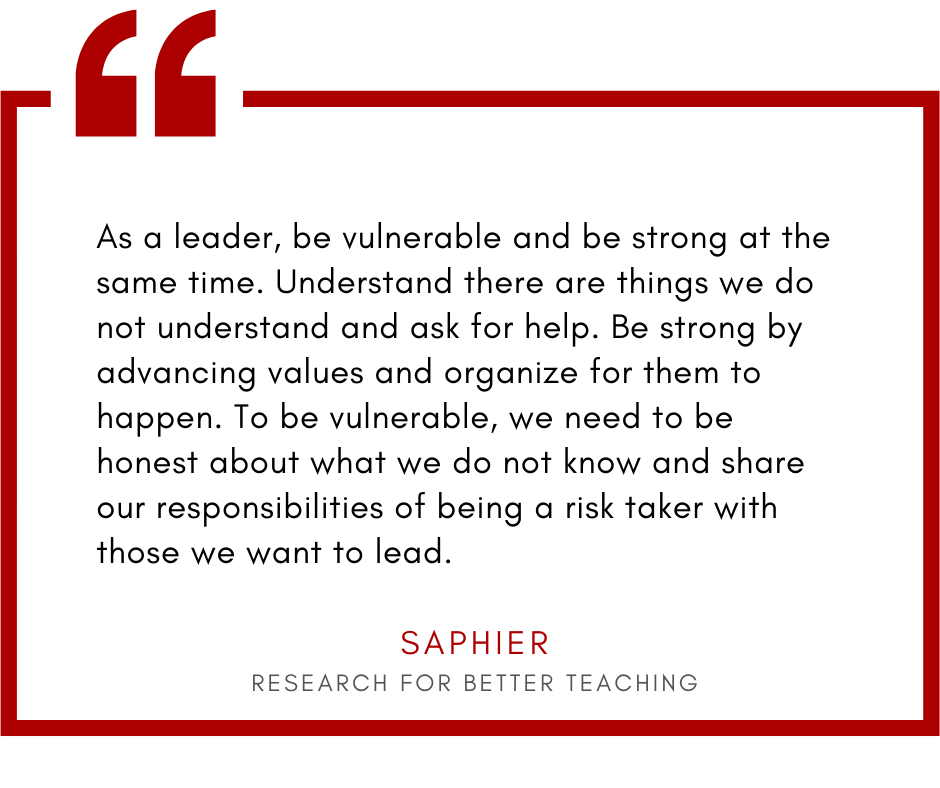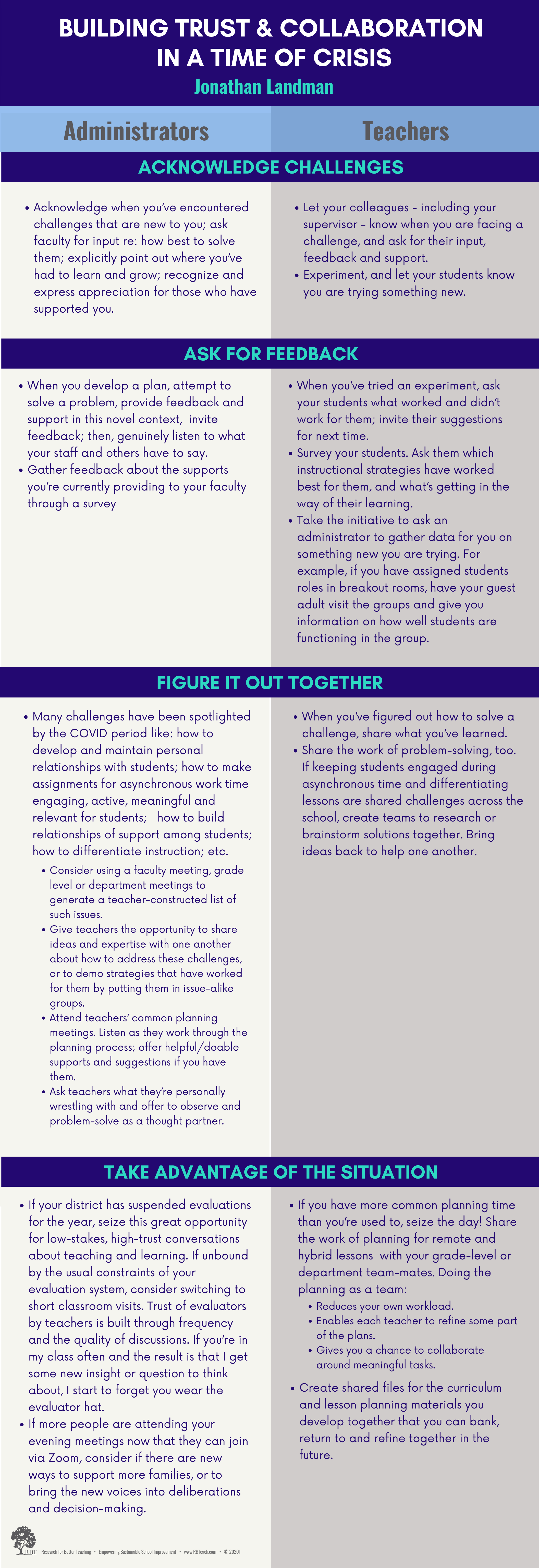Trust in the Time of COVID
February, 2021
In my 30-plus year career in public education, I’ve worked as a teacher, principal, assistant superintendent and in the state’s department of education. Whatever roles we are in, administrators and teachers are collectively experiencing the hardest year of our professional (and for many, personal) lives. We are trying to make hybrid or remote instruction work; we are toggling between instructional models as COVID-19 exposures come and go; we continue to scale steep learning curves as we problem-solve how to use technology tools to deliver instruction. Teachers are spending more time lesson planning, and administrators are spending more time managing logistics than ever before, yet given the reduced instructional time, zooming, distancing and masking… many of our students fall behind, grow fatigued, and disengage. Given what is happening in school and all around us, we and our students are feeling isolation, discouragement, ennui, loneliness, and loss.
We are in the midst of a serious crisis so let’s take Churchill’s maxim seriously. Per Haifetz and Linsky’s Leadership on the Line (Harvard Business School Press, 2002), let’s get up onto the balcony and survey the metaphorical dance floor to see the opportunities. For both administrators and teachers, I’d contend, there are openings particular to this unique moment to build trust and deepen collaboration.

All of us have had to air our vulnerabilities; all of us have had to take risks. |
To start with, there has never been a moment in our careers like this one - when veterans and novices, school leaders and teachers - have all been forced to learn so much so fast. Since last March, I cannot count how often I have heard experienced professionals say they’ve felt like they were back at square one, like new teachers or new leaders. As a consequence, whether we wanted to or not, all of us have had to air our vulnerabilities; all of us have had to take risks.
Teachers find themselves asking their students to help them with technology snags; leaders ask for their faculty’s and communities’ forbearance as they figure out how to deal with unanticipated curveballs and revise their plans. We have struggled to engage our learners in remote learning and adjusted to having parents present in our remote classrooms. All of us drop off of Zooms, stumble as we attempt to share a screen or discover we are muted, ask our colleagues to get us up to speed with a new technology tool.
The interesting thing is that this vulnerability and risk-taking are very good for learning organizations. For professionals engaged in complex, challenging work, vulnerability is essential to growth. This is true both for teachers, and for school leaders. (Inspire Learning, Not Dread. Roussin & Zimmerman, Journal of Staff Development, Dec 2014; Daring Greatly: How the Courage to Be Vulnerable Transforms the Way We Live, Love, Parent, and Lead. Penguin-Random House, 2012)

As leaders and teachers share their vulnerabilities, they have an extraordinary opportunity to learn together. If they learn together and express appreciation for the support their colleagues give them, they also have an opportunity to build trust. In The Speed of Trust: The One Thing That Changes Everything (Free Press, 2006), Stephen Covey describes how passion, excitement, physical energy, creativity and productivity go up in organizations as trust increases.
Frankly, it would be surprising if we saw these glowing outcomes right now as we struggle with COVID, but trust accumulated now can help sustain us through our current difficulties and may pay these dividends later. Intriguingly, this opportunity to capitalize on shared vulnerability coincides with hybrid and remote schedules that often include extra time for common planning. So amid the challenges of COVID, where can we capitalize on this shared vulnerability and extra planning time to deepen trust and collaboration? Here are a few possibilities the educators in my own district have shown me; a few more I’ve heard about from colleagues, and one or two I still plan to try out myself.

As leaders and teachers share their vulnerabilities, they have an extraordinary opportunity to learn together. If they learn together and express appreciation for the support their colleagues give them, they also have an opportunity to build trust. In The Speed of Trust: The One Thing That Changes Everything (Free Press, 2006), Stephen Covey describes how passion, excitement, physical energy, creativity and productivity go up in organizations as trust increases.
Frankly, it would be surprising if we saw these glowing outcomes right now as we struggle with COVID, but trust accumulated now can help sustain us through our current difficulties and may pay these dividends later. Intriguingly, this opportunity to capitalize on shared vulnerability coincides with hybrid and remote schedules that often include extra time for common planning. So amid the challenges of COVID, where can we capitalize on this shared vulnerability and extra planning time to deepen trust and collaboration? Here are a few possibilities the educators in my own district have shown me; a few more I’ve heard about from colleagues, and one or two I still plan to try out myself.

Beyond the Time of COVID, the collaborative habits we build now can be transformative. In my experience, schools have always been at their best when colleagues have come together to rise to a challenge. If we come out of this time proceeding on the presumptions that we do not have all the answers; that we can grow through openly sharing and tackling our challenges with our colleagues; that we can learn from one another, then our in-person practice next year and beyond may be enhanced by the hard-won lessons learned in this year of crisis.